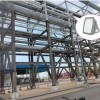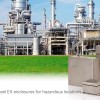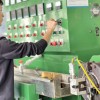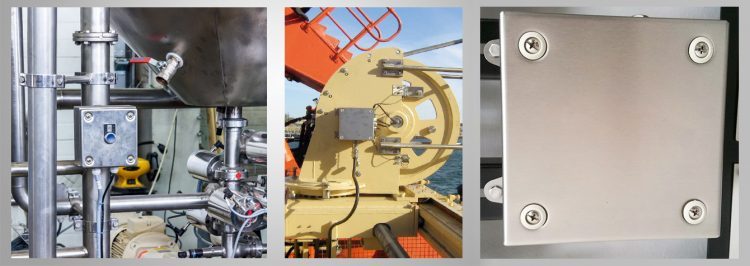Electrical and electronic steel enclosures have a wide range of industrial uses. These enclosures are made of both stainless steel and carbon steel. Let’s look at the difference between stainless and carbon steel enclosures and their services, and how they function in different industrial environments.
Carbon Steel vs. Stainless Steel: What’s the Difference?
Stainless steel and carbon steel are iron, carbon, and other elements alloyed together. In stainless steel, iron, carbon, chromium, nickel, and molybdenum are all present. The following are the main characteristics that distinguish stainless steel from carbon steel.
Resistance to Corrosion
Stainless steel ex enclosures, as the name indicates, resists corrosion and discolouration. Steel and other iron-based metals are subject to oxidation (rust and pollution), which is a chemical reaction triggered by oxygen exposure that eventually disintegrates the iron component.
Stainless steel resists oxidation because it contains a high amount of chromium, which is resistant to oxidation. The corrosion resistance of chromium shields the iron content from oxygen exposure.
Carbon steel’s high carbon content makes it a brutal metal, but it lacks the corrosion resistance of stainless steel when exposed to oxygen and moisture.
Carbon Content Is Higher
Another significant distinction between the two types of steel is that carbon steel has a more substantial carbon content than stainless steel, ranging from weight, depending on the grade. The following are the key features of carbon steel:
- The amount of carbon in the product
- Hardness and strength
Enclosures made of stainless steel and carbon steel have a variety of uses.
In the harsh environments prevalent in many industrial setup, stainless steel enclosures are helpful. Sections made of stainless steel protect their contents from moisture, corrosive agents, and severe temperatures. These enclosures are adaptable to various industrial applications and may be altered.
These steel enclosures are used in a variety of industrial applications, including:
- Treatment of sewage
- Production of oil and gas
- Pharmaceutical production and manufacturing
- Handling and processing of food supplies
- Hospitals
- Other uses in a sterile environment
Carbon steel is classified into four classes based on its carbon content. Different types of carbon steel are used to create various parts and industrial equipment.
- Low Carbon Steel – has the least amount of carbon. Low-cost, very flexible, and lacking in strength and durability. It’s a building material.
- Medium Steel – a more rigid alloy used in axles and shafts.
- High Steel is a carbon steel alloy used to create high-strength items such as springs and wires.
Marine Applications, Adverse Environments,
Our rated stainless steel enclosures are more resistant to moisture and corrosion than carbon steel enclosures and can survive harsh environmental conditions. Electrical enclosures with ratings are protected from several ecological elements.
Corrosion resistance is required for steel used in food service and marine applications since it must tolerate contact with corrosive cleansers, seawater, and acidic chemicals. Stainless steel enclosures, such as Integra Enclosures’ range, are custom manufactured to any size or standard.
On the other hand, carbon steel enclosures frequently lack the corrosion-resistance features of stainless steel enclosures and the associated rating.
1. Stainless steel resists corrosion.
Stainless steel has a strong rust and corrosion resistance. This is because it has numerous components that aren’t found in regular carbon steel. Chromium, molybdenum, and nickel are among them.
When these elements are infused into steel during the forging process, steel is far more corrosion resistant than carbon steel. The chromium in stainless steel creates a coating of chromium oxide on the structure’s surface when it comes into contact with oxidation sources like water or salt. The cover is protected from additional corrosion by this layer.
2. Stainless steel is a long-lasting and low-maintenance material:
Stainless steel is a durable and low-maintenance metal. It’s also simple to clean with the most common industrial cleaning supplies. A round of stainless steel polish now and then will assist in maintaining the steel looking and functioning its best.
3. Stainless steel offers an elegant and clean appearance:
Although appearances aren’t everything, they are undoubtedly important, particularly when trying to project the appropriate image. Many customers think its smooth, gleaming surface gives them the clean, modern look they want.
4. Stainless steel comes in wide range:
Because stainless steel contains a wide range of components, it’s pretty simple to make distinct types of stainless steel. Some are more resistant to certain forms of corrosion, while others are more durable.
Why are there so many dissimilar types to decide from? Another advantage of stainless steel is that the manufacturing method and element composition may be easily changed. The stainless steels characteristics are changed as a result of this. See our guide on the differences between stainless 304 and 316 steel to discover more about two of the most prevalent stainless steel varieties.
5. Stainless steel has a high temperature and low-temperature tolerance:
At very high and low temperatures, stainless steel ex enclosures maintains its material integrity. While temperature tolerances vary by stainless steel type, the Nickel Institute’s reference on high-temperature properties of stainless steel is an excellent place to start.





